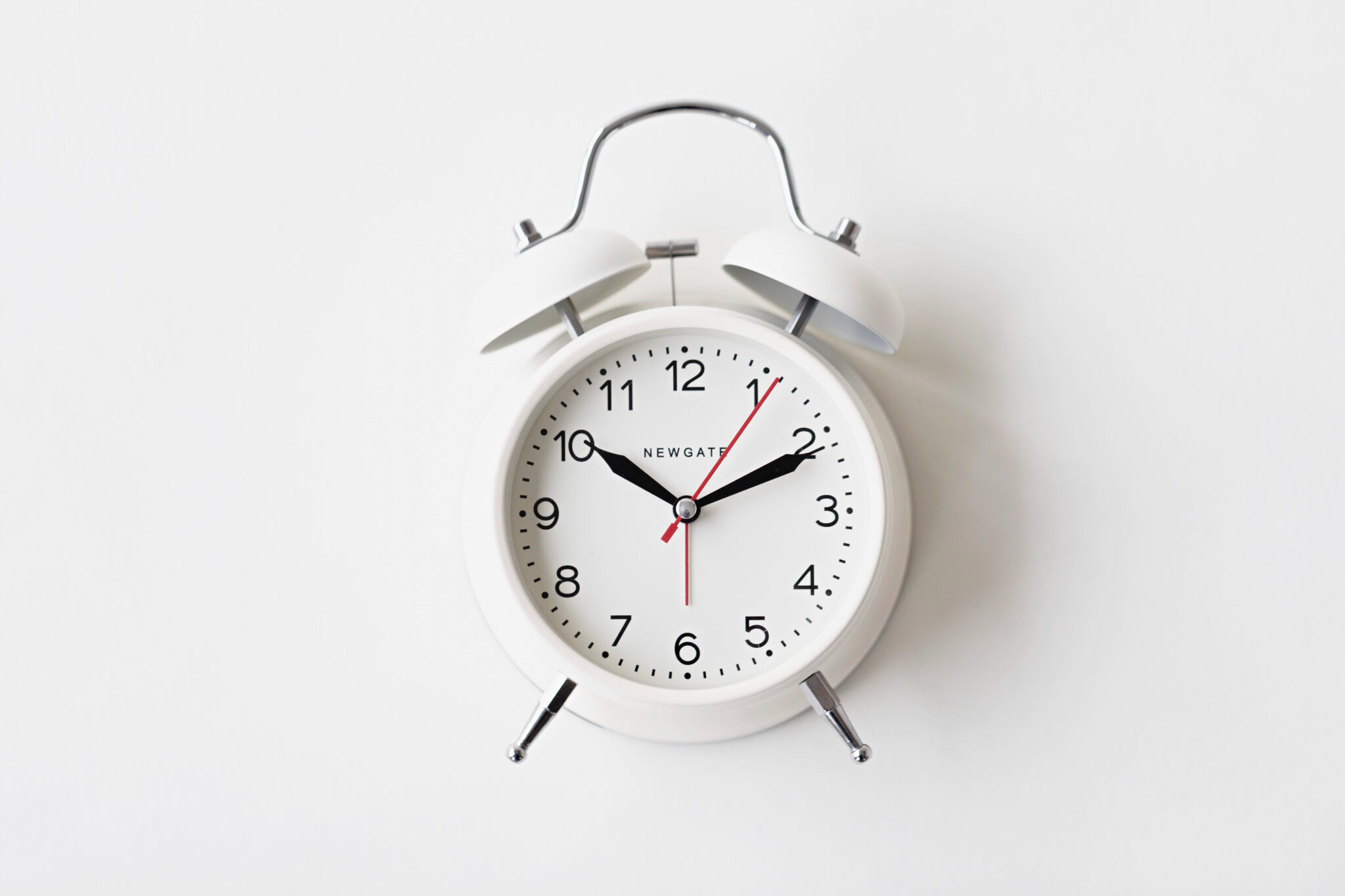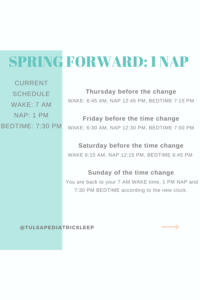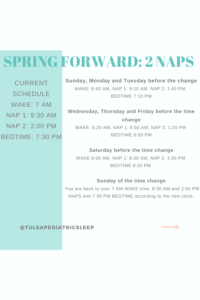Daylight Saving Time
It happens every year, but Daylight Saving Time still manages to catch many of us by surprise. In the U.S., we will spring forward on Sunday, March 9th, 2025 at 2:00 AM.
What is Spring Forward?
When we Spring Forward, we set our clocks forward one hour. This means that we lose one hour because that hour is skipped.
Does Spring Forward make it darker in the morning?
When the clocks go forward, sunrise will be an hour later and mornings will be darker. For those of you who have an early riser, this may mean the chance that your child will start to sleep later. For that reason, many parents think this time change is a good one.
Nobody feels it the way babies and small children do but with a little preparation, you can transition your little ones to their new schedule without too much trouble. There are different ways to make the transition. Decide on one of the following transition methods to help your child adjust:
Cold Turkey Approach:
On Saturday night, move all the clocks in your house ahead one hour. On Sunday, you will use your regular schedule but do everything according to the new clock time. All naps and bedtime will be at their usual time, according to the new time on the clock. I really only recommend this approach for infants under 6 months and children older than two years who seem to have an easier time with changes/transitions. Admittedly, this is the approach I have almost always taken and my children adjust relatively quickly. Maybe it’s because they are well-rested or because I stay consistent. Whatever the reason, I’m not complaining!
Gradual Approach:
For children between six months and two years, or children who have a harder time with changes/transitions I really think it is important to make the switch gradually. If you are a planner, this approach is for you!
Here are two examples of how you can do that, depending on how gradual you want to go.
- Starting the Thursday before the change, move your child’s wake up time, bedtime, and nap times earlier by 15 minutes each day. That way the time change won’t feel so drastic on Saturday night. Here is an example with a 7:00 pm bedtime: On Thursday, bedtime becomes 6:45 pm, Friday it is 6:30 pm, Saturday it is 6:15 pm and then by Sunday you are back to 7:00 pm according to the new clock.
- For an even more gradual change start about a week before and move everything earlier by about 20 minutes every three nights. Here is the example with a 7:00 pm bedtime: The Sunday, Monday, and Tuesday before the time change do a 6:40 pm bedtime. On Wednesday, Thursday and Friday do a 6:20 pm bedtime and then on Saturday do 6:00 pm, which will be 7:00 pm again according to the new clock time on Sunday.
I think the best thing to do is transition your child based on the number of naps they are taking. See images below for a plan!
Tips No Matter Which Approach You Use:
- Getting fresh air and exposure to bright light first thing in the morning will help reset the internal body clock. Try to get outside in the mornings as much as possible on the weekend of the time change. If it’s not possible to get outside, open the blinds and curtains. Just 10 minutes for an infant and 45 minutes for an older child is enough to be helpful!
- Make naps a priority during this transition. One of the best ways to prepare your child for Daylight Saving Time is to make sure they are getting good naps for the few days before the time shift.
- 2 words: Black-out shades! Evenings will be lighter and we don’t want sunlight causing any bedtime battles.
- Avoid bright lights in the evening, including any screens like the TV, computer, or iPad.
- Keep evening activities very calm.
- Take back bedtime! A time change is a great time for a “reset” if you’ve been a little off your schedule.
- Try to do everything according to the new clock time starting Sunday. This means all meals and sleep times. Wake your child up at their regular time on Sunday morning (as long as it is after 6 am), even though it will feel an hour earlier to them. However, be flexible and be aware of your child’s sleepy cues. If they seem tired earlier than normal for naps or bedtime you can continue to make the transition more slowly.
It can take a week or two for your child’s body to adjust after we spring forward. Remember that all children are different. Some will barely seem to notice the change but for others, taking an hour of sleep away can be hard.
Is you want to be more prepared for the time change, check out my Spring Forward Time Change Toolkit! This FREE 12-page eBook is packed with expert tips, strategies, and sample schedules designed to help your child adjust to the time change with ease.
If you feel like you need specific support, take a look at my Coaching Services to see how I can help you.




